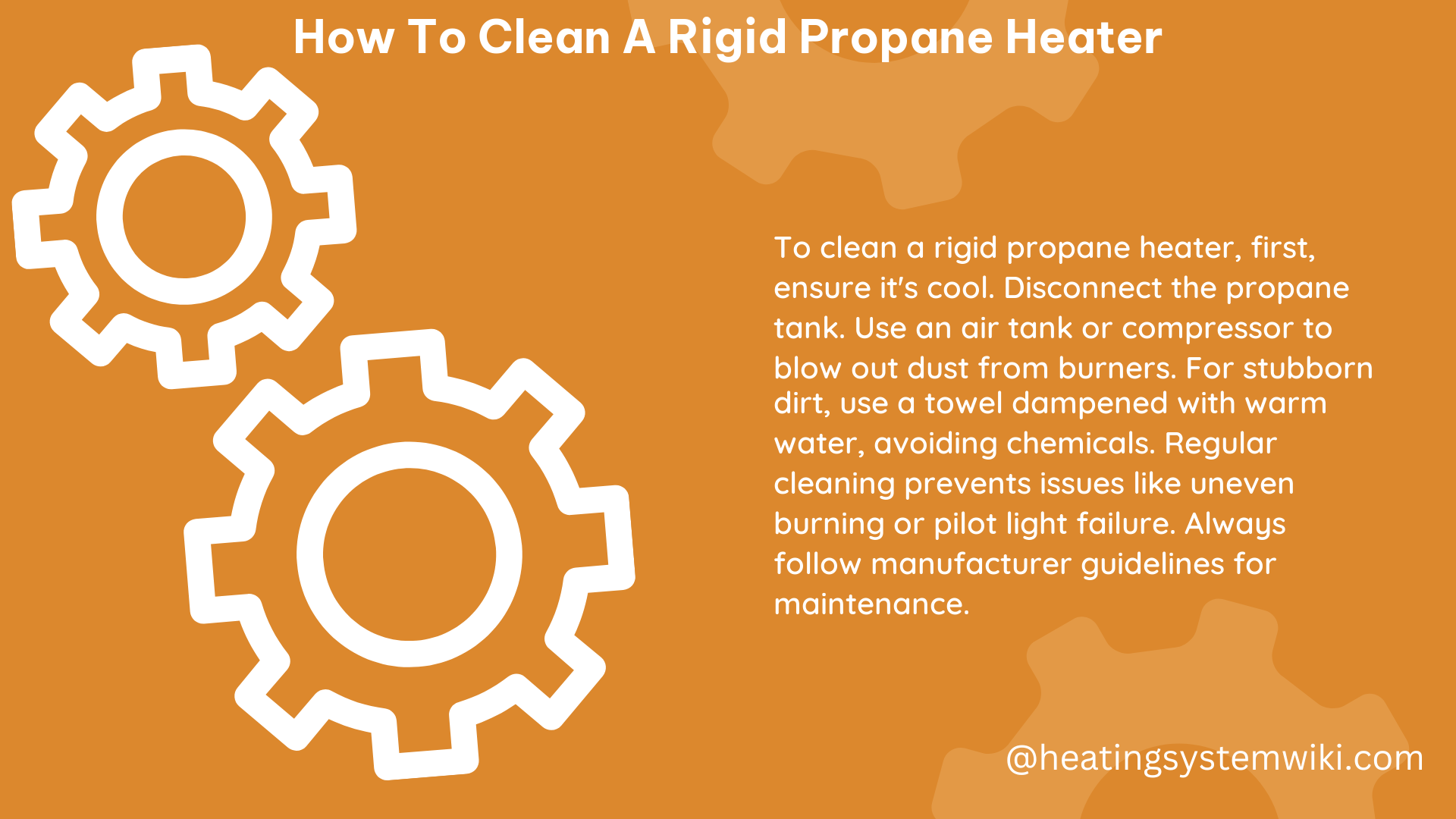Maintaining a RIDGID propane heater is crucial for ensuring its safe and efficient operation. This comprehensive guide will walk you through the step-by-step process of cleaning your RIDGID propane heater, covering everything from removing the propane tank to inspecting the thermocouple. By following these detailed instructions, you can keep your heater in top condition and extend its lifespan.
Preparing the Heater for Cleaning
Before you begin the cleaning process, it’s essential to ensure the heater is completely cooled down. Allow the heater to sit for at least 30 minutes after use to allow the components to cool. This will help prevent any potential burns or accidents during the cleaning procedure.
Next, disconnect the propane tank from the heater. Carefully inspect the connection points to ensure there are no gas leaks. If you detect any leaks, do not proceed with the cleaning and contact a qualified technician immediately.
Cleaning the Burners and Heat Shield

The burners and heat shield are the primary components that require regular cleaning to maintain optimal performance. Begin by using a soft cloth or brush to gently wipe down the burners and heat shield, removing any visible dirt, debris, or soot buildup.
If you notice any blockages or obstructions in the burners, use a small brush or a can of compressed air to carefully dislodge and remove the debris. Avoid using any harsh chemicals or abrasive materials, as they can damage the delicate components of the heater.
It’s important to note that the RIDGID propane heater has a unique burner design that features a series of small holes. These holes can become clogged over time, reducing the efficiency of the heater. Use a small, soft-bristled brush or a toothpick to carefully clean each individual hole, ensuring they are free of any obstructions.
Inspecting and Cleaning the Thermocouple
The thermocouple is a critical safety device that shuts off the gas supply if the pilot light goes out. If the thermocouple is dirty or damaged, it can prevent the heater from igniting or staying lit.
Carefully inspect the thermocouple for any signs of wear or damage. Use a soft cloth to gently wipe down the thermocouple, ensuring it is free of any debris or buildup. Make sure the thermocouple is properly aligned with the pilot light, as any misalignment can affect its functionality.
If the thermocouple appears to be damaged or is not functioning correctly, you may need to replace it. Refer to the RIDGID website or contact the manufacturer for guidance on the appropriate replacement part and installation instructions.
Reassembling and Testing the Heater
Once you have completed the cleaning process, carefully reassemble the heater, ensuring all components are properly aligned and secured. Reconnect the propane tank and perform a leak test by spraying a solution of soapy water around the connection points. If you see any bubbles forming, there is a gas leak, and you should not use the heater until the issue is resolved.
After the leak test, light the pilot light and observe the heater’s operation. Ensure the main burner ignites and remains lit, and that the thermocouple is functioning correctly. If the heater does not operate as expected, refer to the manufacturer’s troubleshooting guide or contact RIDGID customer support for further assistance.
Storing the Heater
When not in use, it’s essential to properly store the RIDGID propane heater. Always remove the propane tank and store it in a well-ventilated area, away from any heat sources or open flames. Do not store the heater with the propane tank attached or near the unit.
Ensure the heater is completely cooled down before storing it. Clean the exterior of the heater with a soft cloth and store it in a dry, protected location, such as a garage or shed. Avoid storing the heater in damp or humid environments, as this can lead to the development of rust or other issues.
By following these detailed instructions, you can effectively clean and maintain your RIDGID propane heater, ensuring its safe and efficient operation for years to come. Remember to always prioritize safety and refer to the manufacturer’s guidelines for any specific instructions or recommendations.
